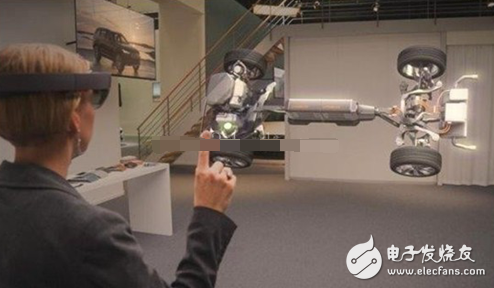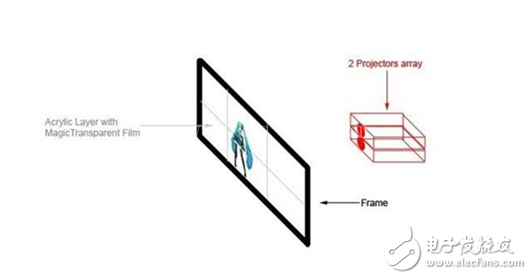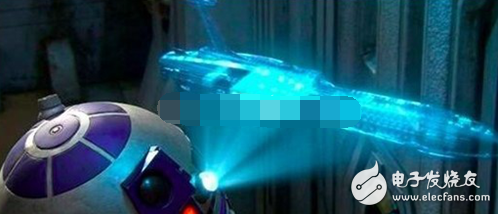1. A 29-year-old graduate from Chad Dyne in Massachusetts in the United States invented an air projection and interaction technology, a milestone in display technology that can project interactive images on the wall formed by airflow. . This technology is based on the principle of a mirage, which projects images onto water vapor. Due to the unbalanced molecular vibration, images with strong levels and stereoscopic effects can be formed.
2. The Japanese company Science and Technology invented a 3D image that can be used to project a solid with a laser beam. When the nitrogen and oxygen are dispersed in the air, the mixed gas turns into a hot slurry. Form a short 3D image in the air. This method is mainly achieved by continuous small blasting in the air.
3. Researchers at the University of Southern California's Institute of Innovation and Technology are now announcing that they have successfully developed a 360-degree holographic display that projects images onto a high-speed rotating mirror to achieve three-dimensional images, but it seems a bit dangerous. It can be said that many technologies are being developed in many countries. It is no exaggeration to say that this technology contains the future. Whoever uses this technology first will be the first to enter the advanced technology ranks in the future.
Holographic projection technology is a reverse display of holographic technology, essentially by forming a stereoscopic image on air or a special stereo lens. Different from the flat screen projection, the stereoscopic effect is realized only by the effect of perspective, shadow and the like on the two-dimensional surface. The holographic projection technology is a true 3D image, and the different sides of the image can be viewed from any angle of 360°.
4. There is a pseudo holographic projection application for commercial use today. At present, it is roughly divided into two categories: the projector directly casts back on the holographic projection film, which is also the application of the Hatsune concert. The other is to use a projector or other display method to refract 45-degree imaging of the holographic projection of the phantom imaging film. The latter's imaging effect is relatively more dazzling, but the cost is relatively higher, and the site is more limited. The holographic release of the Juxian game held in the Water Cube is the application of the phantom imaging film, which uses the LED screen to refract the light source, and the stage effect is very dazzling.
On the evening of March 9, 2010, Sega held a so-called holographic projection concert called "Miku's Day" called "Miku's Day". The projector is directly cast back on the holographic projection film, which is holographic, but not the most ideal holographic projection.
In July 2010, Chinese singer Han Geng also applied this technology in his personal concert.
On December 31, 2011, Jiangsu Satellite TV's New Year's concert invited the late team of the movie "Avatar" and the lighting team of the British "X-Factor" to create a holographic projection effect for the Chinese music world. Zhou Bichang and the late stars such as Mei Yanfang, Deng Lijun, and Leslie Cheung completed a “cross-time sing†and won the ratings of the same period of the evening.
True holographic projection technologyWhen the public mentioned holography, they did not think of laser and interference principles, but the three-dimensional images that were seen in the air and floating in the air. It is for this reason that the word "holographic" is abused, as long as it is a virtual image that shocks the vision, it may be called holography. The PR that wants to climb the "black technology", the media that wants to attract attention, and the masses who are unclear but believe in what they see with their own eyes have contributed to this phenomenon.

There are a lot of ways to see floating 3D images in your eyes, and it usually has little to do with lasers and interference, but the way to look at the outside world with our visual system. When we look at nearby objects, there are six main depth cues that help us form three-dimensional vision.

1. Perspective: objects in the distance look smaller;
2, occlusion: objects in the vicinity will block the object;
3, binocular (stereo) parallax: the left and right eyes see different views of the same object;
4. Monocular (motion) parallax: When the head moves, objects in the distance and near will move at different amplitudes;
5. Aggregation: When the eye is focused on a nearby object, the two eyes meet;
6. Adjustment: According to the distance of the object, the eyeball adjusts the focus accordingly.

The holographic image is to reproduce all six depth cues, completely deceive the brain and let it think that "seeing ghosts".
Iget Vape,Iget Bar,Iget King Vape,Iget King
Shenzhen Kate Technology Co., Ltd. , https://www.katevape.com